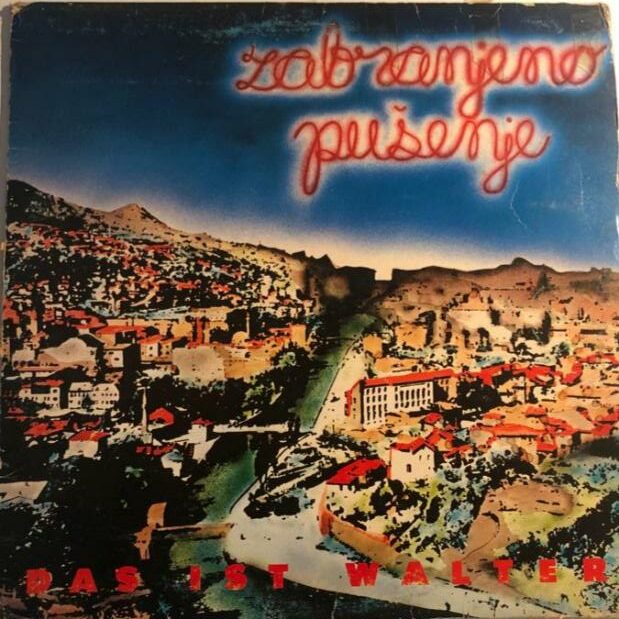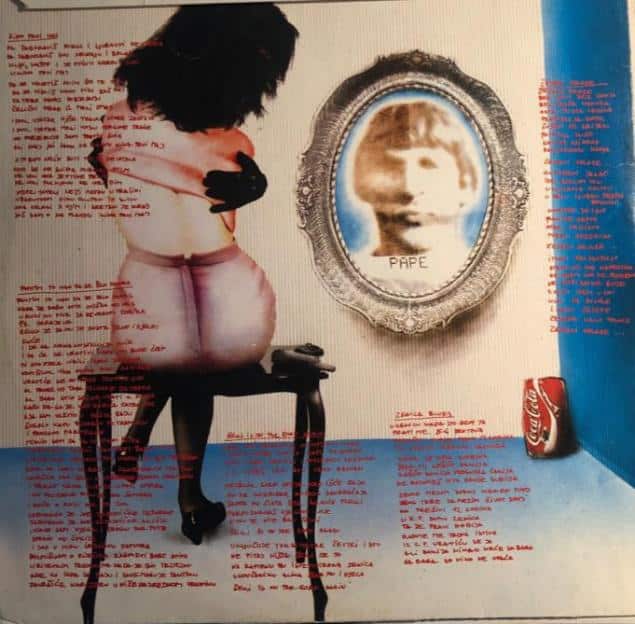
SARAJEVO (DAS IST WALTER)
How many times have I heard that question. What is Sarajevo for you? There are many more bigger cities, but I don’t believe that for any of them, sincerely, this question has been asked this many times.am čuo to pitanje. Šta je za tebe Sarajevo? Ima mnogo ozbiljnijih gradova, ali ne verujem da je i za jedan, onako iskreno, pitanje postavljeno toliko puta.
For me, Sarajevo was just one thing. That famous INTRO in the first album of Zabranjeno Pušenje, DAS IST WALTER. As before, I suppose around ′86s-′87s, till this very day. The first two albums came to me in a package, or in some short interval. Of course, through the musical authority of my 7 years older brother. I was around 8 or 9. First came the cassette, recorded over, of the second album, DOK ČEKAŠ SABAH SA ŠEJTANOM (Waiting on sunrise with the devil). Probably some Diskoton folk, covered with yellow-green duct tape to hide that disreputable original sound recording. Not the entire double album fit, only the best off. I’ve never asked my brother who was the harsh critic, but the job was done professionally. Afterwards, it wasn’t difficult to come to the conclusion that it would be an equally outstanding single album, as we called them back then. What I remember is that I played the cassette at Grandpa and Grandma’s in Bosnia during the holidays, along with Soldatski bal (The Soldiers’ ball) by Plavi Orkestar. But that’s a story for another time.

Because in the autumn, the vinyl record awaited me.
It wouldn’t be that magical if I hadn’t missed VALTER BRANI SARAJEVO (Walter defends Sarajevo) several times on DOZVOLITE DA SE OBRATIMO (Allow us to address), the famous show about the Yugoslav People’s Army that always ended with a partisan movie. Respect to the PARTIZANSKA ESKADRILA (Partizans squadron), Yul Brynner, and others, but that was it, my brother used to say.
And then that introduction starts... You don’t understand anything, but you grasp it all.
Onda gledaj Lafčino, SIEHST DU DIESE STADT ?!
That INTRO continued to live on, beyond the album and the movie, and beyond Sarajevo as such, creating its own magical world, detached and floating beyond Sejo and Nele, beyond Šiba Krvavac and beyond the city and the misfortune that befell it, as a metaphor for all our misfortunes in these lands.
So many stories have been told about it, but again, when you flip to the B-side (ŠEKI IS ON THE ROAD AGAIN) and when Casio (that’s how it’s presented on the cover, and we should stick to that) Seida Mali Karajlić’ starts and the first beats:
Kada noć prekrije Olimpijski grad (When the night covers the Olympic city)
I kad gazde kafića kažu (And when the café owners say)
Ajmo raja fajronat (Let’s go, folks, it’s over)
You can’t help but wonder again. What on earth happened?!
That famous Vučko and the Olympics struck me in the hamlet Podsrnetica, the village of Bravsko, municipality of Bosanski Petrovac. I was left with Grandma and Grandpa to receive my pre-school education in their own way that winter and spring. I’m grateful to them for that to this day. Giant slalom and Jure Franko on the newly bought color TV, the first in the village, in a winter idyll never experienced that way again (we waited for that snow in Bosnia, and it finally fell). I don’t even know if it was exactly like that, I was six years old, but apparently, that’s also my Sarajevo.
I also remember how my cousin Vlado from Ključ, who died on Kupres, used to play Youth radio Sarajevo in the summer and say that the Surrealists originated from there. And now, in that scorching heat between two hay purchases, you imagine that city of inexhaustible talents for joking and for living (because what is life if not a joke).
Until someone probably reintroduced the word “coexistence” and started explaining its meaning.
But perhaps a city that experienced just an unprecedented boom in the 80s needed to build an upscale ski resort nearby (2% svake plate, niko od nas nije rekao ne (2% of each salary, none of us said no) (ABID)), so that it wouldn’t be just Dubrovnik and Hvar that close. The most beautiful things happen on the edge of the abyss, I’ll misquote my great friend in difficult times.
Again, it’s easier for me than for all those Surrealists, Emirs, Kenovićs, Sidrans, Jergovićs, Elvisses, Zlajas and Žeras, Bratošs, Vukašinovićs, Goran of course, not to forget Davorins and Bodas, Mirzas, Osims... whose lives were redirected by that shot from the Holiday Inn. How I connected with that city is not the same, I didn’t live there.

POST SCRIPTUM
When someone needs to be explain why vinyl records! Give them the inner cover of the girl with the Pape’s tapestry, while the room fills with the rhythm section from Fuad Midžić street (Munja Mitić on bass, Šeki Gajton on drums, and the masterful Ogi Gajić on saxophone and flute), perhaps the best on a debut album ever. Here, we mustn’t forget Mujo Snažni on lead guitar and the already mentioned Sejo Mali Karajlić on organ and Casio. Nor should we forget the production by Mahmut “Paša” Ferović, executive production by Raka Marić, and all of it in Jugoton under the baton of Siniša Škarica.
We saved Mick Jones and Joe Strummer of the New Primitivism for the end. ☺
MK 6.23.